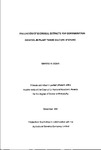EVALUATION OF MICROBIAL EXTRACTS FOR CONTAMINATION CONTROL IN PLANT TISSUE CULTURE SYSTEMS
| dc.contributor.author | HUSSAIN, SHAYNE | |
| dc.contributor.other | School of Biological and Marine Sciences | en_US |
| dc.date.accessioned | 2013-11-14T12:03:32Z | |
| dc.date.available | 2013-11-14T12:03:32Z | |
| dc.date.issued | 1991 | |
| dc.identifier | NOT AVAILABLE | en_US |
| dc.identifier.uri | http://hdl.handle.net/10026.1/2716 | |
| dc.description.abstract |
Culture filtrates of 13 microbial antagonists exhibited in vitro growth inhibition of a range of test contaminations of herbaceous and woody plant tissue culture systems. Filtrates produced by Bacillus subtilis and Trichoderma viride isolates displayed the greatest broad- range inhibitory activity. Microscopic analysis of antagonized fungal mycelia revealed altered hyphal morphology. Maximum filtrate inhibitory activity was produced when selected antagonists were cultured within a pH range of 5-7 and a temperature range of 20-35°C. Filtrates were thermo-stable at 70°C and could be stored for up to 4 weeks with only a minimal reduction in their inhibitory activity. Bulk-volume production of inhibitory filtrates of a T. viride isolate was achieved by optimization of fermentation pH, temperature, and aeration conditions. Plant culture species displayed different responses when grown on media incorporated with microbial filtrates. Microscopy studies at the cellular level revealed reduced cell densities and cellular distortion in plant tissues treated with phytotoxic doses of microbial filtrates. Non-phytotoxic doses of filtrated produced by the B. subtilis and T. viride isolates produced a reduction in the density of opportunistic contaminations in herbaceous plant tissue cultures when applied as prophylactic treatments. Microbial filtrates proved totally ineffective when employed as post-infection sterilants in contaminated plant cultures. The efficacy of selected microbial filtrates was not comparable to that of conventional antibiotics when assessed for their ability to control contamination levels in herbaceous and woody plant culture systems. Further purification of microbial filtrates for enhanced inhibitory activity is discussed along with the possibility of co-cultivation of micro-organisms with plant tissue cultures as a means of biocontrol of phytopathogens. | en_US |
| dc.language.iso | en | en_US |
| dc.publisher | University of Plymouth | en_US |
| dc.title | EVALUATION OF MICROBIAL EXTRACTS FOR CONTAMINATION CONTROL IN PLANT TISSUE CULTURE SYSTEMS | en_US |
| dc.type | Thesis | |
| plymouth.version | Full version | en_US |
| dc.identifier.doi | http://dx.doi.org/10.24382/4306 | |
| dc.identifier.doi | http://dx.doi.org/10.24382/4306 |
Files in this item
This item appears in the following Collection(s)
-
01 Research Theses Main Collection
Research Theses Main


